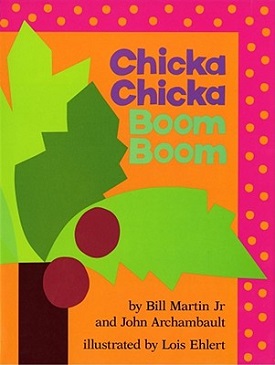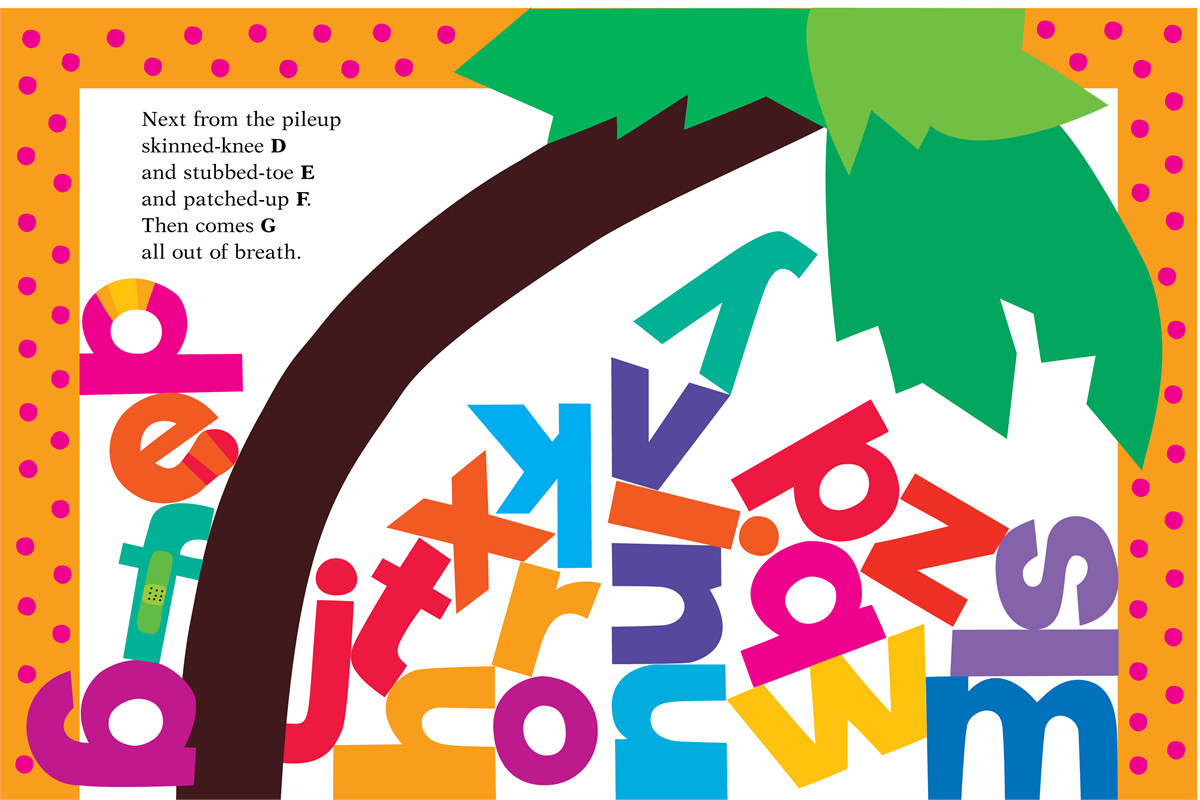Chicka Chicka Boom Boom by Bill Martin Jr. & John Archambault
Chicka Chicka Boom Boom (1989) Written by Bill Martin Jr. & John Archambault. Illustrated by Lois Ehlert
This book is bound to keep any reader’s attention and
teach them the alphabet swiftly. With lots of repetition and a rhythm that
harkens that of a skipping rope song, this book will keep children engaged
while helping them learn the alphabet. For one, the writing has great predictability
allowing for the child to participate when being read to by joining in on the
repeated phrase “Chicka chicka boom boom” or by guessing what will happen to
the tree and in turn all the letters. It also goes through the alphabet in
order twice in the story, once when they climb up the tree and once when each
letter gets assessed after the fall. While this story is both educational and
entertaining, it can also be viewed as relatable by many children since its
tone and simple plot moments are very similar to common playground accidents. While
many alphabet books provide a list like experience simply stating a letter and
objects that begin with that letter, this book provides a fun story that offers
easy rereadability. It even hints at that idea on the last page when the letter
“a” sneaks back up the tree when no one is watching. This is a clear indication
that the story can go on and repeat itself as many times as the child would
like, giving many opportunities to go through and learn the alphabet.
While
the language in this book has a jaunty feel to it, the illustrations only enhance
that feeling with bright colors and playful art of injured letters like “p”
being black-eyed and “f” sporting a band aid. Each spread uses a stark white background
as to not overwhelm the pages with color, since the colors used are so bold. In
the first part of the book, as the letters are all climbing up the tree, we see
the gradual bending of the coconut tree with every turn of the page signaling the
eventual tumble, adding more to the predictability element. This combined with
the questioning of “Will there be enough room?” builds the suspension for the
child, making them eager to see the eventual fall. On the page of the fall, we
see all the letters jumbled in a giant heap yet still separate enough to
distinguish each letter, making it a good page to have the children review the
entire alphabet by pointing to and naming each letter in order. A nice touch is
that the “adults” in this story are just uppercase versions of the lowercase
versions we see running up the tree. This gives the opportunity to teach the
difference between uppercase and lowercase as well as relating the uppercase
version of a letter to the lowercase counterpart. In the end, the final spread of
the book is the alphabet including the uppercase and lowercase letters displayed
in order which allows it to be used as a nice final review moment.


Comments
Post a Comment